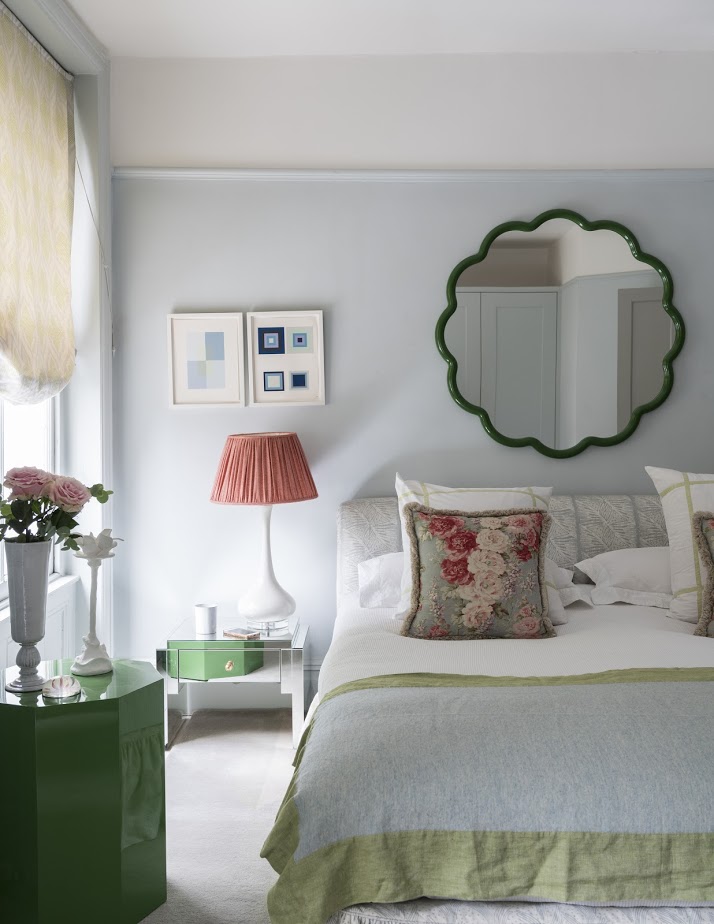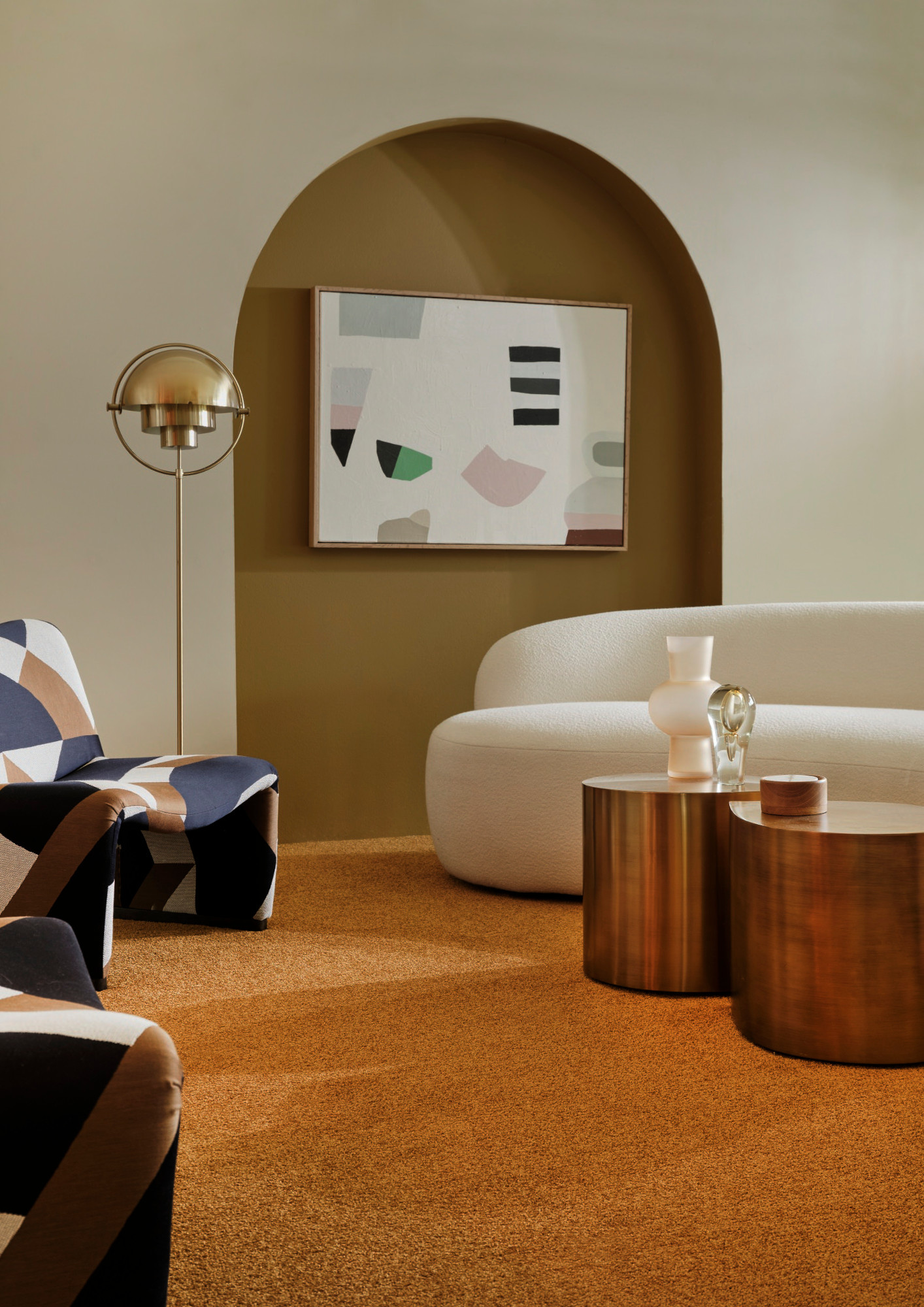Is carpet out of style? Designers share how they’re using it now – and what to try instead
We spoke to the experts to ask if carpet is still on-trend – and how to make it work in a modern home


Soft, warm and textural, carpet has reigned supreme in homes around the world for centuries as a means to up the comfort levels of hard floors and add color to an otherwise soulless scheme. But where it has its practical benefits, carpet can be tricky to keep looking good, too: it requires upkeep and is prone to wearing down in high traffic areas.
But practical considerations aside, there’s another big question: are carpets even fashionable any more? With a move towards hardwood, vinyl and laminate flooring, often warmed up with rugs, some feel there’s no place for carpet in 2026 – while others aren’t quite ready to let go of this interior design trend just yet.
We spoke to the experts to get their take on the debate – and perhaps unsurprisingly, the reaction was mixed. It seems there are ways to make carpet work in today’s schemes if you choose carefully – but for many of the designers and tastemakers we asked, there are more contemporary alternatives that are well worth considering.
Is carpet a dated trend?
Carpets have been used for time immemorial, and some of our most popular rug styles today – like the Persian rug – come from early examples of floor coverings. For centuries, carpets were made from natural materials like wool, but the 20th century brought about innovations in fibres that made nylon, polyester and other manmade materials more popular. In recent years, though, these materials have raised concerns about their environmental impact – which may have played a role in carpet’s fall from favor.
‘Carpeting is a carry over from the bygone era of the 1970s and 1980s,’ says Shoshanna Shapiro, owner and principal designer of interior design studio Sho & Co. ‘It’s an inexpensive option to create a neutral color palette while keeping flooring costs reasonable for homeowners, but synthetic materials easily discolor from spills, dust and stains from daily use.’ Still, she thinks there’s still a place for carpet: ‘If used sparingly in a low traffic area, like a guest room, it still may be a viable option for those on a budget.’

Tom Lawrence-Levy of interior design firm Natural Asthetik agrees that carpet isn’t always practical – and objects to it on a style level, too. ‘I personally always opt against wall to wall carpet,’ he says. ‘I think that although it can feel cozy, it visually doesn't complement the furniture in the room. It can really hurt the overall design of a room because it seems to take over the entire space. It's not the easiest to keep clean over the course of time, and can also make an area look less luxurious.’
Other designers have a different view. ‘There are so many rug options that designers have been gravitating towards them, but a good broadloom is here to stay,’ says interior designer Vicente Wolf of Vicente Wolf Associates. ‘I’m a firm believer that spaces, especially bedrooms, should always utilize wall-to-wall carpeting. It aids in comfort levels, adds warmth in winter, and has the additional benefit of sound absorption. It can either blend well with the room, offering continuity – or it can offer another surface to bring in an accent colour.’
The Livingetc newsletters are your inside source for what’s shaping interiors now - and what’s next. Discover trend forecasts, smart style ideas, and curated shopping inspiration that brings design to life. Subscribe today and stay ahead of the curve.
Similarly, Darren Jett, founder of JETT Projects, is still a fan of carpet. ‘People might associate carpet with a dated interior, simply because they haven’t seen it done well recently,’ he says. ‘Carpet is not out of style! It can be so luxurious and transformative.’
How can carpet be used in a more contemporary way?
If it’s not over for carpet, it’s clear it still needs a bit of a rebrand – starting with where it’s used. ‘I think beautiful, neutral carpet is always a good option for a room where you want to create a cozier, softer atmosphere,’ says Amy Leferink of Interior Impressions. ‘Most people default to bedrooms for carpet, and that's a great choice, but I love it for sitting rooms, libraries, dens and slightly more intimate spaces where it can create a more plush atmosphere.’
Grace Baena, interior designer at online pre-loved furniture marketplace Kaiyo, agrees. ‘Modern style typically favors hardwood or tile, so using carpet in a contemporary way usually means taking advantage of more modern, lower-profile carpeting, in modern colors like neutrals or greys,’ she says. ‘This can be a great choice for a living room or bedroom, or anywhere hardwood or tile detracts from a cozy or hospitable atmosphere.’
Darren Jett also prefers using a toned-down, neutral scheme in his projects: ‘Carpet can be the great unifier in a room, bridging all the elements while creating a sense of calmness and relaxation. Consider going in a tonal interior, where a solid velour wool carpet nearly matches the wall color and the fabric on the furniture.’

Consider moving away from ‘traditional’ notions of how carpet should be used and experiment with it. That could be opting for a pattern or bold colored carpet, but it could also be how it’s laid. ‘For some clients, I have done "almost" wall-to-wall wool, offset by four inches on all sides, so that the wood floor underneath peaks out,’ Darren adds. ‘For those who are more adventurous, you can even do carpeted bases for a sunken sofa and the bed, for a built in look, which I’m doing now for bachelor loft in Soho.’
And if the practical side of things is holding you back? ‘Don’t be afraid of spills,' says Darren. 'We use a crypton type of sealer on wool, which is already the highest quality fiber you can find on the market. And for those with a lower budget, commercial-grade carpet wears wonderfully without being rough on the feet.’
What are the best alternatives to carpet?
Not convinced carpet is right for your scheme? There are other ways to bring in the warmth and texture that carpet offers – as well as other flooring options that will lend themselves better to certain schemes. The number one choice for the designers we spoke to? Rugs.
But this isn't rugs how you know them - just placing one on the floor and being done with it. This is a much richer approach, that provides a sense of elegance and helps to zone a space, too.
‘Rugs are a wonderful alternative to carpet when looking to add comfort and texture to a space,’ says Marie Flanigan of Marie Flanigan Interiors. ‘If you have flooring other than carpet, but want the look and feel of carpet, consider layering rugs. I love when there’s a large rug in a neutral tone with a layered rug on top that complements the space and delineates areas of the room.’

Tom Lawrence-Levy, while still keen on carpet, is also a fan of a living room rug...and in other places, too. ‘I think they’re a necessity in every room,’ he says. ‘An area rug provides elements of texture and warmth and gives the room an additional contrast that adds interest. Area rugs can frame rooms, and can even be layered to provide more textures and colors. Unfortunately, I find that adding area rugs on top of carpets usually looks weird, and doesn't offer the same effect.’
Shoshanna Shapiro prefers the organic nature of wood. ‘The industry is trending towards more natural elements such as wood flooring due to its variety of tones and its longevity,’ she says. ‘Strategically placed area rugs can accent the wood tones and pull together the color palette of the surrounding stylistic elements in a room.’
For a fun, forward-thinking alternative that’s a little bit quirky, Darren Jett has a final suggestion: ‘Try a painted floor if you want a tonal interior, like I did in my own New York apartment. Use an outdoor grade glossy oil paint, which will avoid marks. It works wonderfully to lift the space visually if you don’t have nice wood floors, and just needs a wet vacuum for maintenance.’
It seems there’s still a place for carpet, though gone are the gaudy patterns and colours of old: the new look is pared-back, grown-up and sophisticated. But if you want to avoid the upkeep, or want an easy alternative for a rented space, take note of these designers’ love of a good rug – it could be the perfect upgrade for your scheme.

Ellen is deputy editor of Livingetc magazine. She works with our fabulous art and production teams to publish the monthly print title, which features the most inspiring homes around the globe, interviews with leading designers, reporting on the hottest trends, and shopping edits of the best new pieces to refresh your space. Before Livingetc she was deputy editor at Real Homes, and has also written for titles including Homes & Gardens and Gardeningetc. Being surrounded by so much inspiration makes it tricky to decide what to do first in her own flat – a pretty nice problem to have, really. In her spare time, Ellen can be found pottering around in her balcony garden, reading her way through her overstacked bookshelf or planning her next holiday.